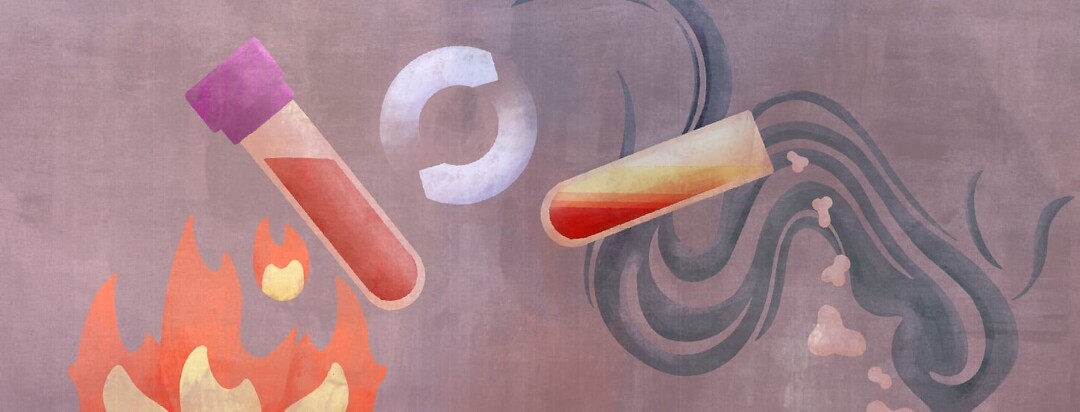Platelet-Rich Plasma Therapy for Rheumatoid Arthritis
As newer therapies continue to emerge to support people living with rheumatoid arthritis (RA), I wanted to explore the use of platelet-rich plasma (PRP) therapy for treatment.
What is platelet rich plasma (PRP)?
Platelet-rich plasma (PRP) is a method of treatment for specific areas of injury or chronic deterioration.
PRP therapy uses an increased concentration of platelets from your own blood to help decrease joint inflammation, relieve pain, and even promote healing in musculoskeletal injuries or conditions like rheumatoid arthritis.1,2
How is PRP performed?
Similar to having bloodwork, PRP therapy involves a small amount of blood being withdrawn and processed. The blood is spun in a centrifuge which separates the liquid plasma from the solid platelets to develop a concentration of platelets and growth factors already found naturally in your body.3
This concentration now contains up to 10 times the amount of platelets and growth factors found in your body. The concentration is then injected back into your body at the sight of the injury area or chronic deterioration, which stimulates your body to begin healing itself.
Many physicians who utilize PRP therapy require patients to return to their office every 4-6 weeks, with 3-6 visits necessary per injection area.4
PRP for damage caused by RA
In rheumatoid arthritis, patients experience a gradual wearing down of cartilage, the substance that cushions our joints. Platelets are filled with growth factors or a substance that routinely supports recovery from injury and triggers healing in our bodies, helping our bodies to regenerate cartilage that has been damaged and degraded by RA.
The growth and healing factors included in the PRP concentration stimulate our bodies to produce fibroblasts and endothelial cells - both of which reduce inflammation - and helps our bodies to produce new, healthy blood vessels. This increases circulation to the damaged area and increases the speed of repair.3,4
By accelerating and boosting healing, the PRP concentration enables our bodies to repair significant amounts of damage. Additionally, the PRP concentration contains proteins that may alter our pain receptors, and thereby reduces the pain sensation we may feel at the site of the injury or deterioration.3,4
Because PRP therapy involves both recovery and regeneration, some patients find that they regain both mobility and comfort in their joints in the weeks and months following their PRP injections.
Clinical research
While the precise mechanisms of action with PRP therapy remain unknown, there have recently been more clinical research studies examining the use of PRP therapy with RA patients.
In a 2020 study, PRP therapy was used in 4 RA patients who suffered without relief from other treatment modalities and presented with persistent pain and inflammation despite the use of steroid medication.
Regardless of previous treatment attempts, duration of disease, or length of time since injury or damaged area became increasingly painful, all four patients showed improvement after receiving PRP therapy.2
Important to note
It is important to note that there is no universal medical definition of "platelet-rich plasma." This means that PRP injections may vary across providers and patients.
Factors including patient characteristics (blood composition or platelet count), how the blood sample is processed, and any additive substances used to enhance the PRP’s healing properties can impact the effect of the PRP therapy and its benefits in any given patient.5
If you’ve received platelet-rich plasma therapy, we’d love for you to share your experience below!

Join the conversation